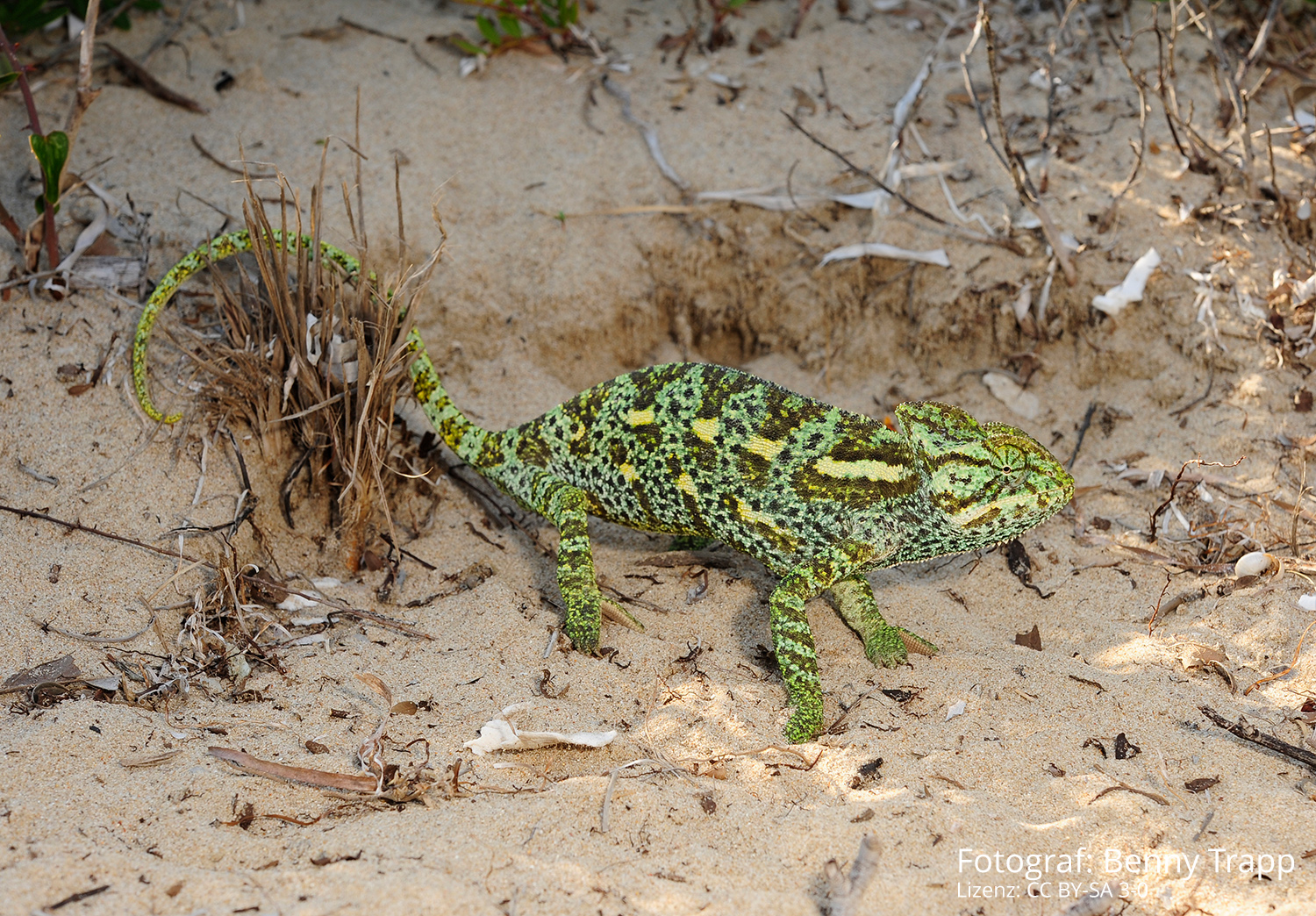To reliably identify or compare chameleon species, genetic samples of the animals concerned are necessary. Traditionally, scientists have used organ or muscle samples from euthanized chameleons in museum collections or – less commonly – cut tail tips or blood samples from living chameleons. Researchers at the American College in Athens, Greece, have studied whether more minimally invasive methods would also be a good alternative.
They sampled 23 Chamaeleo africanus in the area of the lagoon of Pylos (Divari wetland between Gialova and the bay of Voidokilia) in the Peloponnese in Greece using buccal swabs. This involves running a sterile swab on the inside of the cheek through the chameleon’s mouth for six seconds. Blood was taken from the ventral tail vein of eight other Chamaeleo africanus for comparison. Sampling took less than a minute. Afterward, the chameleons were returned to where they were found. The swabs were transported refrigerated in a special buffer solution in Eppendorf cups and then frozen.
In the laboratory, the researchers were able to extract both nuclear and mitochondrial DNA from all the swabs. However, the quantity and quality of the DNA extracted were lower than in the blood samples. For most applications such as PCR amplification and gene sequencing, however, the scientists said the quantity was sufficient. In terms of invasiveness and destructiveness, buccal swabbing is certainly preferable to killing or injuring individual chameleons. Studies on other reptiles suggest that rapid freezing is not mandatory either – in the field, a functioning cool chain could become a problem in many chameleons’ countries of origin. The current study advises against ethanol as a fixing solution; the buffer solutions used lead to better results.
Buccal swabbing appears to be less applicable for cases where additional material for future studies might be preserved, for example when describing new species, or when sequencing the entire genome. However, the method is certainly a good alternative, especially for particularly small chameleon populations where lethal sampling could already significantly limit the breeding pool.
Buccal swabs as an effective alternative to traditional tissue sampling methods for DNA analyses in Chamaeleonidae
Maria Koutsokali, Christina Dianni and Michael Valahas
Wildlife Biology
DOI: 10.1002/wlb3.01052


